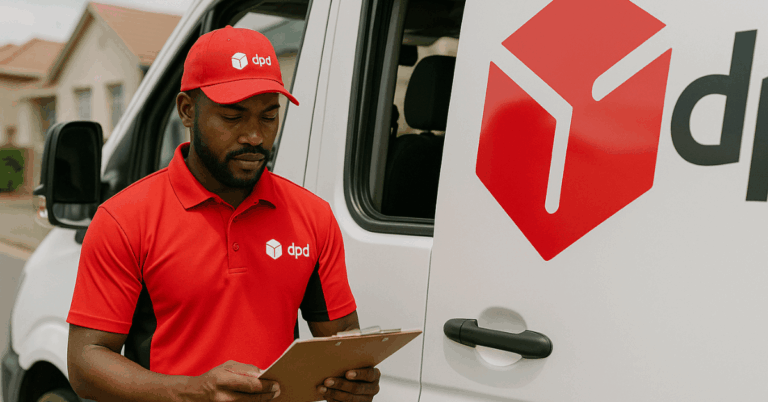Texting has become a primary communication method, and understanding the most common abbreviations is essential in 2024. This article will equip you with the critical abbreviations needed to keep up with today’s fast-paced conversations.
Whether you’re new to texting or want to stay updated, these abbreviations will make your communication smoother. Get ready to enhance your texting game efficiently.
List of Most Common Texting Abbreviations
Here’s a quick guide to the most commonly used short forms in texting. Knowing these will help you communicate faster and more clearly in digital conversations.
Financial System Code (IFSC)
The IFSC is a unique code used to identify bank branches in India during online transactions. NEFT and RTGS payments must ensure your money reaches the right destination. This code is crucial for banking operations, making online transfers safe and accurate.
Regional Transport Office (RTO)
The RTO is responsible for vehicle registration and driver licensing in India. It ensures that all vehicles on the road meet legal standards and that drivers are appropriately licensed. The office also handles the transfer of ownership and road tax collection.
Automated Teller Machine (ATM)
An ATM allows you to withdraw cash, check balances, and perform other banking tasks without visiting a bank. ATMs are available 24/7, making them a convenient option for accessing your money anytime. They play a crucial role in modern banking by providing instant access to funds.
Value Added Tax (VAT)
VAT is a tax levied on the sale of goods and services at each stage of production or distribution. Businesses collect it on behalf of the government and include it in the price you pay. VAT helps generate revenue for the state and is applied to a wide range of products.
Identification Number (PIN)
A PIN is a numeric code used to authenticate your identity, often for transactions and secure access. It’s required for accessing bank accounts via ATMs, making online purchases, and other sensitive activities. Keeping your PIN secure is vital to protect your financial information.
No Objection Certificate (NOC)
A NOC is an official document indicating no objections to a particular action or transaction. It’s commonly required for property sales, vehicle transfers, and employment. The NOC ensures that all parties involved have given their approval.
Permanent Account Number (PAN)
The PAN is a unique identifier to track financial transactions and file taxes in India. It’s issued by the Income Tax Department and is required for various economic activities, such as opening a bank account or filing tax returns. The PAN helps the government monitor income and prevent tax evasion.
Indian Standards Institute (ISI)
The ISI mark is a certification that indicates a product meets the Indian Standards of quality and safety. It’s issued by the Bureau of Indian Standards (BIS) and is essential for consumer confidence. Products with the ISI mark are considered reliable and safe for use.
Power Of Attorney (POA)
A POA is a legal document that allows one person to act on behalf of another in legal or financial matters. It’s often used when someone cannot manage their affairs due to illness or absence. The POA grants the chosen person the authority to make decisions in specific areas.
Global Positioning System (GPS)
GPS is a satellite-based system used to determine precise locations on Earth. It’s commonly used in navigation systems in vehicles and smartphones. GPS helps you find your way, track routes, and reach destinations accurately.
Goods and Services Tax (GST)
GST is a comprehensive tax levied on manufacturing, selling, and consuming goods and services in India. It has replaced multiple indirect taxes, simplifying the tax structure. GST is designed to create a unified market and reduce the burden on businesses.
Closed-Circuit Television (CCTV)
CCTV systems use video cameras to transmit signals to a specific place, usually for surveillance and security purposes. They are widely used in public and private spaces to monitor activities and enhance safety. CCTV footage can be vital in crime prevention and investigation.
Secure Digital Card (SD Card)
SD Cards are small storage devices that save data like photos, videos, and files. They are commonly found in smartphones, cameras, and other electronic devices. SD Cards provide a convenient way to expand storage capacity and transfer data between devices.
Central Processing Unit (CPU)
The CPU is the main component of a computer that carries out instructions from programs. It’s often referred to as the computer’s ” brain, ” handling everything from basic operations to complex calculations. A powerful CPU can significantly improve a computer’s performance.
Right To Information (RTI)
The RTI Act empowers Indian citizens to request information from public authorities. It promotes transparency and accountability in government operations and allows citizens to obtain details on public spending, decisions, and policies, fostering an informed and active citizenry.
Magnetic Ink Character Recognition (MICR)
MICR is a technology used in banking to verify the legitimacy of paper documents, especially checks.
It uses special ink and machine-readable characters to process transactions quickly and accurately. MICR codes are critical for preventing fraud and ensuring the smooth handling of checks.
Unique Identification Authority of India (UIDAI)
UIDAI is the organization responsible for issuing Aadhaar numbers, which serve as a unique identity for Indian residents.
The Aadhaar number is used for various purposes, including government subsidies, bank accounts, and mobile connections. UIDAI ensures that everyone has a verified and secure identity.
Portable Network Graphic (PNG)
PNG is a popular image format for lossless compression, meaning it retains quality without losing data. It supports transparent backgrounds, making it ideal for web graphics and logos. PNG is widely used in digital design due to its balance of quality and file size.
Digital Versatile Disc (DVD)
A DVD is a digital optical disc storing large amounts of data, including movies, music, and software.
It offers higher storage capacity than a CD and is commonly used for home entertainment. DVDs have been largely replaced by digital streaming but are still in use for various purposes.
AM (Ante Meridiem) and PM (Post Meridiem)
AM refers to the period from midnight to noon, while PM covers the period from noon to midnight. These terms distinguish between the two 12-hour periods in a day. Knowing AM and PM is crucial for scheduling and understanding time formats.
Internet Protocol (IP)
IP is the method by which data is sent from one computer to another over the internet. Every device connected to the internet has a unique IP address used to route information accurately. IP addresses are essential for online communication and data exchange.
High Definition Multimedia Interface (HDMI)
HDMI is a standard for transmitting high-quality video and audio between devices such as televisions, monitors, and projectors.
It allows for the seamless connection of digital devices and delivers clear visuals and sound. HDMI has become the go-to interface for most modern electronics.
Uniform Resource Locator (URL)
A URL is the address used to access resources on the internet, such as websites and files. It typically includes the protocol (like HTTP), domain name, and path to the resource. URLs are crucial for navigating the web and finding specific content.
Portable Document Format (PDF)
Adobe developed PDF, a file format that maintains the formatting of documents across different devices and platforms. It’s widely used for sharing and printing documents because it preserves fonts, images, and layouts. PDFs are common in official documents, forms, and eBooks.
Carbon Copy / Blind Carbon Copy (CC / BCC)
CC is used in email to send a copy to additional recipients, while BCC hides those recipients from others. CC keeps everyone informed, whereas BCC maintains privacy. These features are crucial for effective communication and managing information distribution.
Liquid Crystal Display (LCD)
LCD technology is used in televisions, computers, and mobile devices screens. It manipulates light through liquid crystals to produce images. LCD screens are known for their clarity and efficiency, making them popular in various devices.
Secure Sockets Layer (SSL)
SSL is a security protocol that encrypts data transmitted over the Internet, protecting sensitive information like passwords and credit card numbers. It’s widely used on websites to secure transactions and personal information. SSL is critical for maintaining trust in online interactions.
Digital Subscriber Line (DSL)
DSL is a technology that provides high-speed internet access through telephone lines. It allows you to use the internet and phone services simultaneously without interference. DSL has been a common choice for home internet connections, offering faster speeds than traditional dial-up.
Internet Service Provider (ISP)
An ISP is a company that provides you with internet access, either through DSL, cable, or fiber optics. Your ISP is responsible for your connection speed, reliability, and service options. Choosing a reliable ISP is essential for maintaining a suitable internet experience.
Structured Query Language (SQL)
SQL is a programming language used to manage and manipulate databases. It’s essential for querying, updating, and managing database data. SQL skills are critical in data science, web development, and information systems.
Joint Photographic Experts Group (JPEG)
JPEG is a widely used format for compressing digital images and balancing quality and file size. It’s ideal for photographs and web images, where high resolution isn’t necessary. JPEG files are standard in everyday use, making them easy to share and upload.
Graphics Processing Unit (GPU)
A GPU is a specialized processor designed to handle graphics rendering, commonly used in gaming and video editing. It offloads tasks from the CPU, allowing smoother visuals and faster performance. GPUs are crucial for any application requiring high-quality graphics.
Hypertext Markup Language (HTML)
HTML is the standard language for creating and designing web pages. It structures the content on a webpage, including text, images, and links. HTML is fundamental to web development, forming the backbone of websites you visit daily.
The Bottomline: The Most Common Texting Abbreviations to Master in 2024
Understanding the most common texting abbreviations in 2024 is essential for precise and efficient digital communication. As texting remains a primary mode of interaction, these short forms will help you keep up with fast-paced conversations.
Being familiar with these terms will save you time and ensure you stay connected with current trends. Stay informed, and you’ll navigate any text exchange with ease. The bottom line is that mastering these abbreviations will enhance your texting skills significantly.












